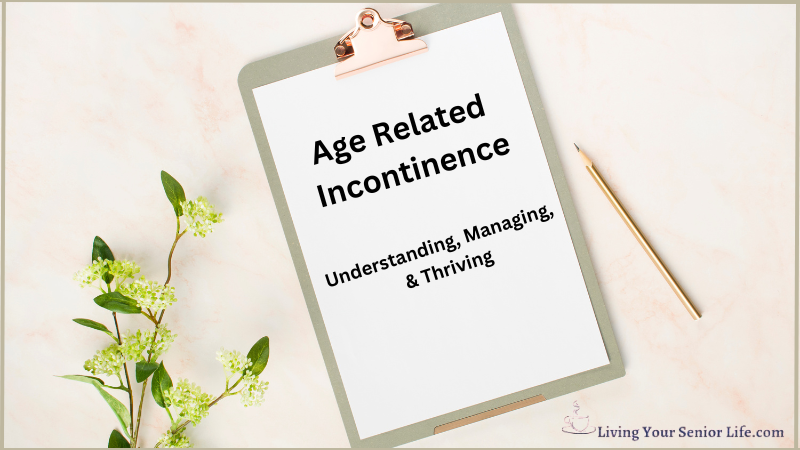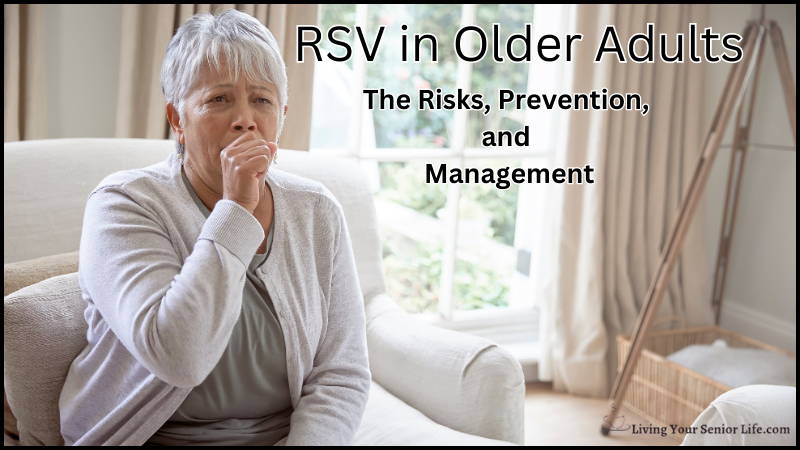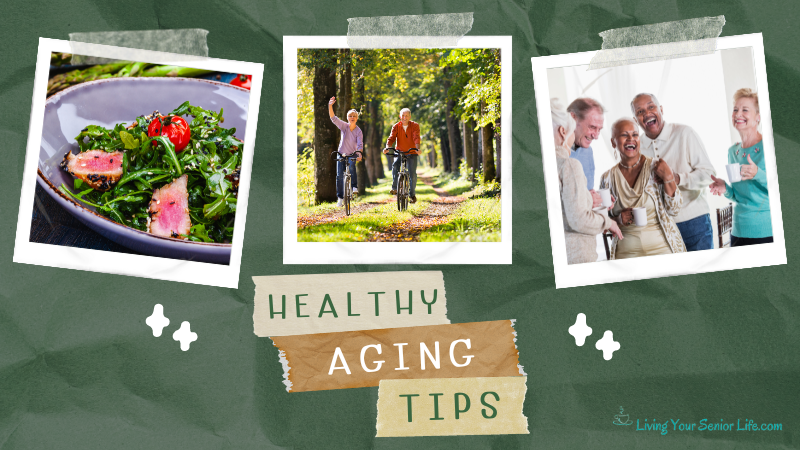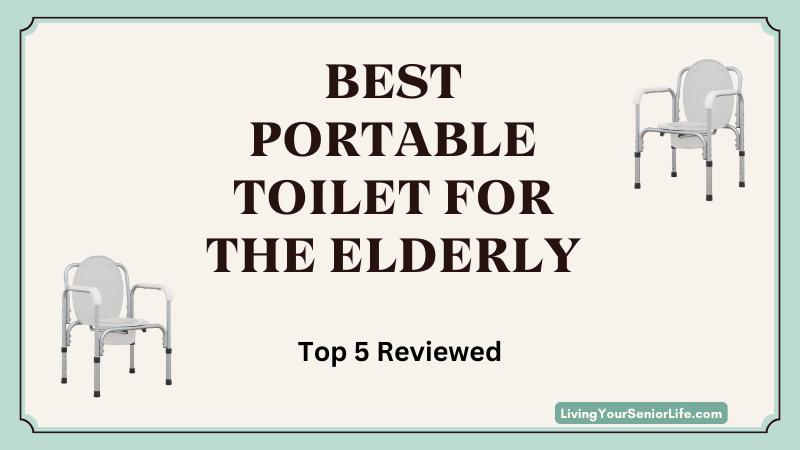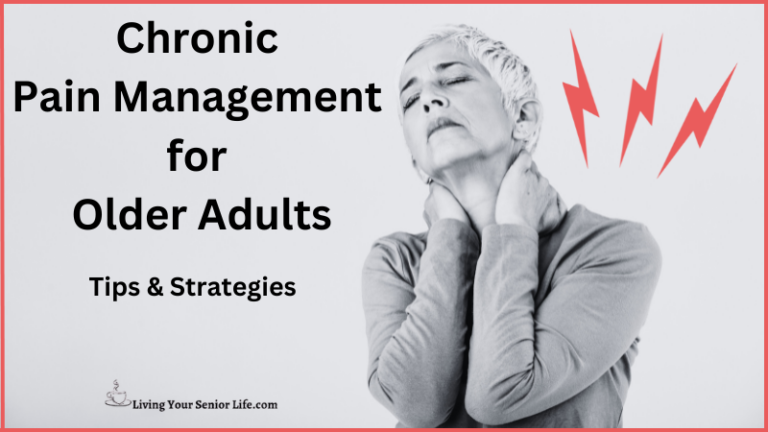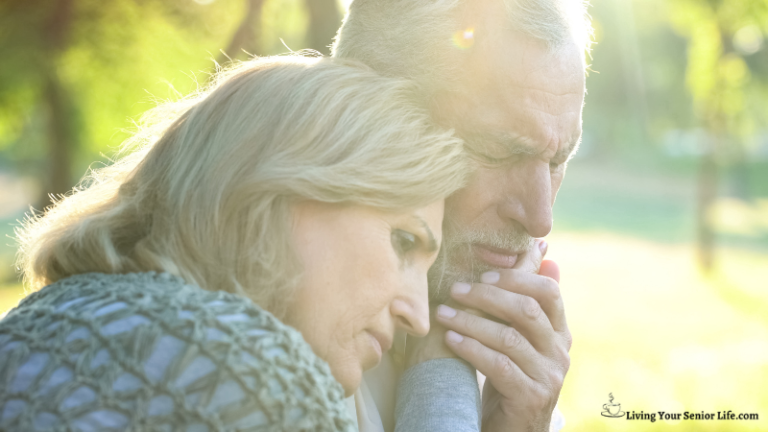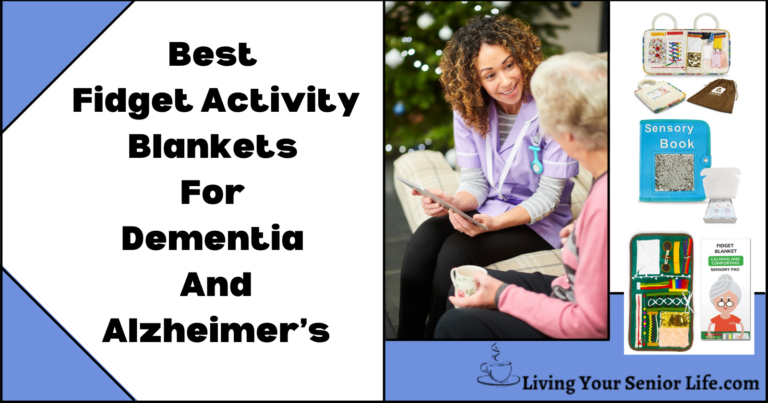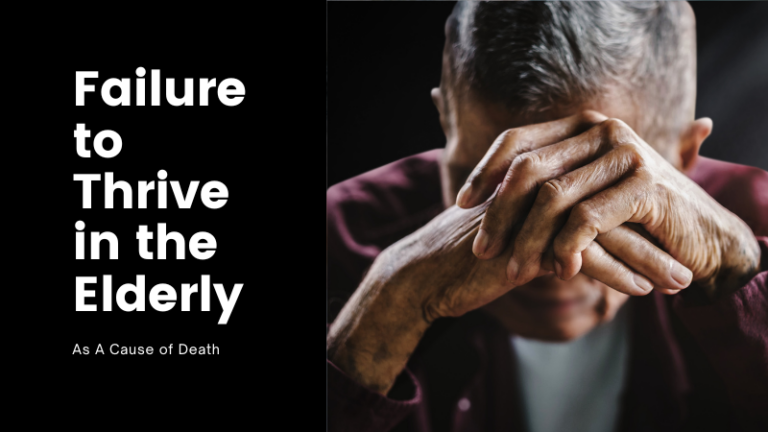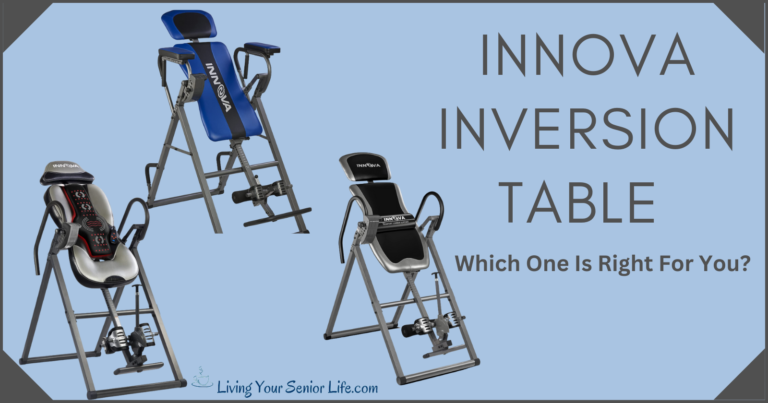Welcome to Living Your Senior Life! As you age, you may experience age related incontinence, a common condition that can impact your quality of life. Age-related incontinence is characterized by the loss of bladder or bowel control and can present unique physical, emotional, and practical considerations for seniors and their caregivers.
In this post, we’ll explore the causes, symptoms, and management options for age-related incontinence. We’ll also provide valuable insights on how to cope and thrive despite its challenges. It’s essential to understand this common issue and seek professional help when needed to provide compassionate and effective care for older adults experiencing this condition.
Note: This post is for informational purposes only and should not be used in place of the advice of a medical professional.
Key Takeaways:
- Age-related incontinence is a common condition that can impact your quality of life as you age.
- Understanding the causes, symptoms, and management options for age-related incontinence is essential in providing compassionate and effective care for older adults experiencing this condition.
- Seeking professional help and making lifestyle changes can help manage age-related incontinence and improve your overall well-being.
Video: What Is Age-Related Incontinence
What is Age-Related Incontinence?
Age-related incontinence is the unintentional leakage of urine that becomes more prevalent as we age. There are different types of incontinence, including stress, urge, overflow, functional, and mixed. The causes can vary, from weakened pelvic muscles to certain medical conditions and medications. Each type of incontinence has its specific causes and treatments. Proper diagnosis by a healthcare professional is essential to determine the underlying cause and develop an appropriate management plan.
Stress Incontinence:
Stress incontinence happens when pressure is placed on the bladder, leading to urine leakage. Common triggers include activities such as laughing, coughing, or lifting heavy objects. This type of incontinence is often caused by weakened pelvic floor muscles, which can occur due to factors like childbirth or menopause.
Urge Incontinence:
Urge incontinence, also known as overactive bladder, involves a sudden and intense urge to urinate, followed by involuntary bladder contractions that result in leakage. Individuals with urge incontinence may feel the need to urinate frequently, even if their bladder isn’t full. This condition is often linked to an overactive detrusor muscle, which controls bladder contractions.
Overflow Incontinence:
Overflow incontinence occurs when the bladder doesn’t empty completely during urination, leading to constant or frequent dribbling of urine. It can be caused by an obstruction in the urinary tract, nerve damage, or weak bladder muscles. People with overflow incontinence may experience a constant feeling of needing to urinate.
Functional Incontinence:
Functional incontinence is not caused by bladder issues but rather by physical or cognitive limitations that prevent individuals from reaching the bathroom in time. This type of incontinence is often seen in seniors who have mobility or cognitive impairments, making it difficult for them to recognize the need to use the restroom or access it in time.
Mixed Incontinence:
Mixed incontinence refers to a combination of two or more types of incontinence, typically stress and urge incontinence. For instance, an individual may experience leakage during physical activities (stress incontinence) and also have sudden urges to urinate (urge incontinence).
Recognizing the Signs and Symptoms
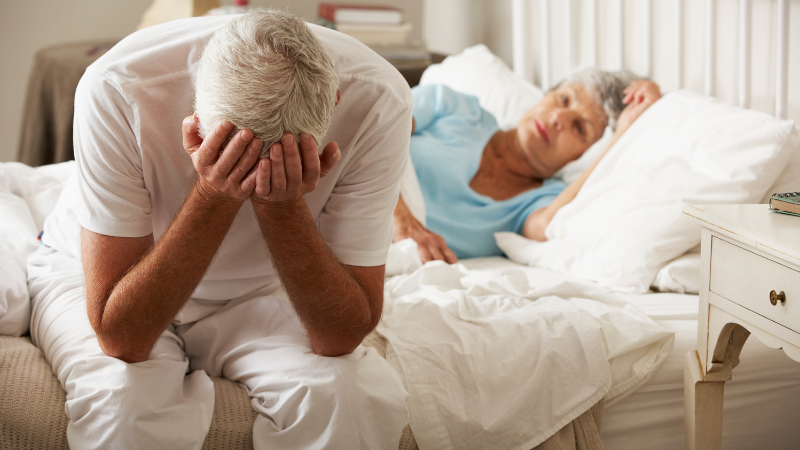
Age-related incontinence is a common condition among seniors, and recognizing the signs and symptoms is crucial for timely diagnosis and proper management. If you or a loved one experiences sudden urges to urinate, frequent nighttime awakenings, or leakage during everyday activities, it may be time to consider age-related incontinence. Seeking professional help for an accurate diagnosis and personalized treatment plan is recommended.
The following are some of the hallmark signs and symptoms of age-related incontinence:
- Sudden Urges to Urinate: Seniors with age-related incontinence often experience sudden, intense urges to urinate that are challenging to control, leading to involuntary leakage before reaching the bathroom.
- Frequent Urination: Another common symptom is frequent urination, known as “urinary frequency.” Seniors with age-related incontinence may find themselves needing to use the restroom more often, including during the night (nocturia).
- Leakage During Physical Activities: Stress incontinence often manifests as leakage during physical activities that exert pressure on the bladder. Coughing, sneezing, laughing, lifting heavy objects, or even just standing up can lead to accidental urine leakage.
- Urine Dribbling: Overflow incontinence may cause continuous or frequent dribbling of urine due to an inability to completely empty the bladder during urination.
- Sudden Leakage Without Warning: Individuals with urge incontinence may experience involuntary urine leakage with little to no warning. This can happen both during the day and night, disrupting daily activities and sleep.
- Bedwetting: Age-related incontinence can lead to involuntary bedwetting during sleep, a condition known as “nocturnal enuresis.”
- Skin Irritation and Infections: Prolonged exposure to urine can lead to skin irritation and even urinary tract infections (UTIs). Seniors with age-related incontinence may experience redness, rash, or discomfort in the genital area.
- Emotional Impact: Incontinence can also have emotional effects, leading to feelings of embarrassment, frustration, anxiety, and a reduced sense of self-esteem.
If you or a loved one experiences any of these symptoms, it is important to seek professional help for proper diagnosis and treatment. With the right management plan, seniors with age-related incontinence can maintain their independence and quality of life.
Seeking Professional Help

It’s essential to differentiate between occasional and chronic incontinence. Occasional leakage can be due to factors like drinking excessive fluids, certain medications, or a temporary infection. However, if the symptoms persist or worsen over time, it’s crucial to seek medical attention.
- Sudden Onset of Incontinence: If you experience a sudden and unexplained onset of incontinence, especially if you haven’t had this issue before, it’s essential to consult a healthcare professional promptly. Sudden changes in bladder control could indicate an underlying medical condition that needs evaluation.
- Blood in Urine: If you notice blood in your urine (hematuria) along with incontinence, it could be a sign of various underlying conditions, including urinary tract infections, kidney stones, or more severe issues like bladder or kidney cancer. Seek medical attention immediately.
- Severe Pain or Discomfort: If you experience severe pain or discomfort in your lower abdomen or back, along with incontinence, it may signal a more significant problem that requires urgent evaluation.
- Fever and Chills: The presence of fever and chills, especially in conjunction with incontinence, may indicate an infection or inflammation that requires immediate medical assessment and treatment.
- Incontinence After Surgery or Injury: If you develop incontinence following surgery or a recent injury, it’s essential to notify your healthcare provider promptly, as it could be related to the procedure or trauma.
- Inability to Urinate: If you have the urgent need to urinate but cannot pass urine or can only produce a small amount, it could be a sign of urinary retention, which requires immediate medical attention.
- New or Worsening Neurological Symptoms: Incontinence accompanied by new or worsening neurological symptoms, such as weakness, numbness, difficulty walking, or changes in coordination, should be evaluated urgently to rule out underlying nerve-related issues.
- Significant Impact on Daily Life: If incontinence is significantly impacting your daily activities, well-being, or emotional state, don’t hesitate to seek medical attention. Healthcare professionals can provide support, guidance, and appropriate management strategies.
Remember, incontinence is not a normal part of aging, and there are often effective treatments and management options available. Seeking timely medical attention allows healthcare providers to identify any underlying causes, offer proper diagnosis, and develop a personalized plan for managing incontinence, thereby improving your overall quality of life.
Medications and Medical Interventions

Medications for Age-Related Incontinence:
When dealing with age-related incontinence, healthcare professionals might suggest medications to help manage the condition. It’s important to have a clear understanding of the benefits and potential side effects associated with these drugs before commencing any treatment..
- Anticholinergic Drugs: These medications work by blocking the action of acetylcholine, a neurotransmitter that can overstimulate the bladder muscles. By relaxing the bladder, these drugs can reduce sudden urges and urinary frequency. However, they may also cause side effects like dry mouth, constipation, and blurred vision.
- Beta-3 Adrenergic Agonists: This newer class of medications specifically targets the bladder’s beta-3 receptors. They promote relaxation of the bladder muscles, increasing the bladder’s storage capacity and reducing the frequency of contractions. These medications may be better tolerated than anticholinergics, with fewer side effects.
- Topical Estrogen (for Women): Postmenopausal women experiencing stress incontinence may be prescribed topical estrogen creams or vaginal rings. Estrogen helps to rejuvenate the tissues of the urethra and pelvic floor, thereby improving bladder control. It is important to discuss the risks and benefits of estrogen therapy with a healthcare provider.
Medical Interventions for Age-Related Incontinence:
In some cases, medical interventions may be recommended to address age-related incontinence. These interventions should be prescribed and performed by healthcare professionals after a thorough evaluation of the individual’s condition and medical history. Treatment options may vary depending on the type and severity of incontinence, as well as the individual’s overall health.
- Botulinum Toxin Injections: Commonly known as Botox, these injections can be administered into the bladder muscle to treat urge incontinence. The toxin temporarily paralyzes the overactive bladder muscle, reducing the number of involuntary contractions and subsequent leakage.
- Sacral Nerve Stimulation (SNS): This procedure involves implanting a device near the sacral nerves that control bladder function. The device sends electrical impulses to these nerves, helping to regulate bladder activity and improve incontinence symptoms.
- Percutaneous Tibial Nerve Stimulation (PTNS): PTNS is a less invasive form of neuromodulation where a thin needle electrode is inserted near the ankle to stimulate the tibial nerve. This nerve connects to the sacral nerves, providing a similar effect as SNS.
- Artificial Urinary Sphincter (AUS): For men with severe stress incontinence, an AUS can be implanted around the urethra. The AUS consists of a cuff that can be inflated or deflated to control urine flow, allowing for improved bladder control.
- Surgery for Pelvic Organ Prolapse: In some cases, age-related incontinence may be associated with pelvic organ prolapse, where organs like the bladder, uterus, or rectum descend into the vaginal canal. Surgery to repair the pelvic floor and provide support for these organs can improve incontinence symptoms.
It’s important to note that medications and medical interventions should be prescribed and performed by healthcare professionals after a thorough evaluation of the individual’s condition and medical history. Treatment options may vary depending on the type and severity of incontinence, as well as the individual’s overall health.
Individuals considering medical interventions should discuss potential risks, benefits, and expected outcomes with their healthcare provider to make informed decisions regarding their incontinence management.
Lifestyle Changes for Better Bladder Health
Diet and Hydration
Maintaining a balanced diet that is rich in fiber can help prevent constipation, which can worsen incontinence. Reducing bladder irritants such as caffeine, alcohol, and acidic foods can also make a significant difference. Remember to stay hydrated, but find a balance in your fluid intake. Drinking too much water can increase the frequency of urination, which can irritate the bladder.
Pelvic Floor Exercises
Pelvic floor exercises, also known as Kegels, are an effective way to strengthen the pelvic muscles and improve bladder control. These exercises involve contracting and relaxing the muscles used to control urination. Practice them regularly, and you will notice improvements in your incontinence symptoms over time.
Weight Management
Maintaining a healthy weight is not only beneficial for overall health but also reduces pressure on the bladder, potentially alleviating incontinence symptoms. Being overweight can put extra pressure on the bladder, increasing the risk of incontinence.
Timed Voiding
Consider implementing timed voiding, where you empty your bladder on a schedule rather than waiting for the urge. This strategy can help you regain control and confidence in managing incontinence. Start by keeping a diary of your urination habits, then gradually increase the time between voiding. This technique can also help you identify patterns in your urination habits and plan accordingly.
By making these lifestyle changes, you can improve your bladder health and manage incontinence symptoms effectively.
Products and Aids for Managing Incontinence
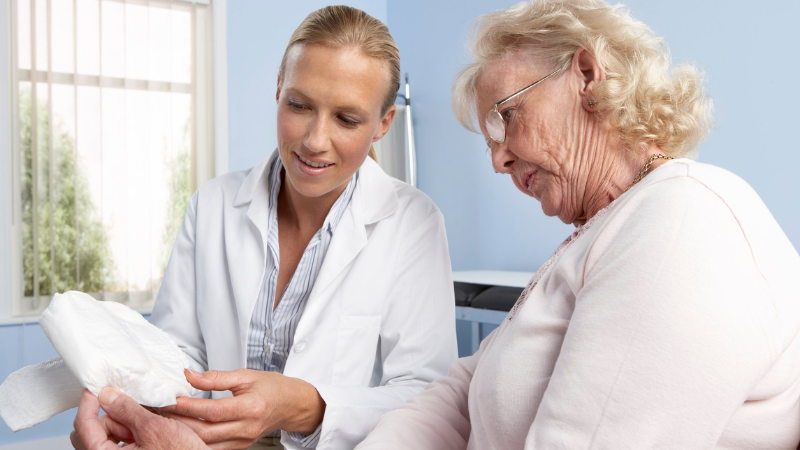
If you or a loved one are experiencing urinary or fecal incontinence, there are several products and aids available to help manage leaks discreetly. Choosing the right product depends on the individual’s needs, the severity of incontinence, and personal preferences. Here are some options to consider:
It’s essential to consider factors like absorbency, comfort, discretion, and ease of use when selecting incontinence products. From pads and briefs to specialized underwear, each option has its advantages. Choose what suits your needs best and regain the freedom to enjoy daily activities.
- Incontinence Pads and Liners: Incontinence pads and liners are absorbent products designed to be worn inside regular underwear. They come in different absorbency levels, from light to heavy, to address various degrees of urinary leakage. These products are discreet, comfortable, and help keep the skin dry, preventing irritation.
- Incontinence Underwear: Incontinence underwear, also known as pull-ups or protective underwear, resemble regular underwear but offer higher absorbency levels. They are ideal for individuals who prefer the convenience and security of an all-in-one solution. Some incontinence underwear even comes with tear-away sides for easy removal.
- Adult Briefs or Diapers: Adult briefs or diapers are highly absorbent and suitable for managing severe urinary or fecal incontinence. They are available in various sizes and styles to cater to different needs. Some adult briefs feature advanced odor control and moisture-wicking properties to maintain skin health.
- Pads for Male Incontinence: There are specialized pads designed specifically for male incontinence. These pads provide targeted protection for the male anatomy and fit comfortably inside regular underwear.
- Bed and Chair Protection: Bed and chair protection products include disposable underpads and waterproof mattress protectors. They offer an extra layer of protection for furniture and bedding against leaks, making cleanup more manageable.
- Catheters and Condom Catheters: Catheters are thin tubes inserted into the urethra to drain urine from the bladder. They may be used for individuals with limited mobility or specific medical conditions. Condom catheters, also known as external catheters, are worn externally over the penis and connected to a drainage bag.
- Skin Care Products: Skin care products like cleansing wipes, barrier creams, and moisturizers are essential for maintaining healthy skin when managing incontinence. These products help prevent skin irritation and discomfort caused by prolonged exposure to urine.
- Odor Control Products: Odor control products, such as odor-neutralizing sprays or scented disposal bags, can help manage unpleasant smells associated with incontinence.
- Incontinence Alarm Systems: Incontinence alarm systems are designed to alert the wearer or caregiver when wetness is detected. These devices can be beneficial for individuals working on bladder training or for caregivers managing incontinence in others.
Coping with Age-Related Incontinence Emotionally
Coping with age-related incontinence can be emotionally challenging, leading to embarrassment and anxiety. However, you are not alone, and there are ways to manage your emotions and find comfort in the company of others who understand. Below are some coping strategies that can help you manage the emotional challenges of age-related incontinence.
Normalize the Experience
Age-related incontinence is a common issue among seniors, affecting millions of people worldwide. It’s essential to know that you are not alone in facing this challenge, and seeking support is a normal part of the process. Consider joining support groups where you can share experiences and find comfort in the company of others who understand.
Open Communication
Talking openly about your experiences with close friends, family, or a support group can help you feel understood and validated. It also allows you to receive emotional support from those who care about you. Consider sharing your feelings and concerns with people you trust.
Educate Yourself
Learning more about age-related incontinence can demystify the condition and help reduce anxiety. Understand that incontinence is a medical issue, and it’s not a reflection of personal shortcomings. Educate yourself about the causes, symptoms, and treatment options for incontinence. This knowledge can help you feel more empowered and in control.
Maintain a Positive Outlook
While coping with incontinence may be challenging, maintaining a positive attitude can make a significant difference. Focus on the aspects of life that bring you joy and fulfillment, and remind yourself that incontinence does not define your worth or identity. Try to stay optimistic and focus on the positive aspects of your life.
Practice Mindfulness and Relaxation Techniques
Engage in mindfulness practices or relaxation techniques, such as deep breathing exercises or meditation, to manage stress and anxiety related to incontinence. These practices can promote a sense of calm and well-being. You can also try yoga or tai chi, which can help you relax and improve your overall health.
Seek Professional Counseling
If you find that coping with emotional challenges is particularly difficult, consider seeking support from a mental health professional. Counseling can offer a safe space to explore your feelings and develop coping strategies. A mental health professional can also help you manage anxiety, depression, or other mental health conditions that may be related to incontinence.
Celebrate Your Achievements
Acknowledge and celebrate the progress you make in managing incontinence. Small victories, such as successfully using pelvic floor exercises or finding the right incontinence product, should be recognized and celebrated. Celebrating your achievements can help you stay motivated and positive.
Adopt a Sense of Humor
Humor can be a powerful coping mechanism. While incontinence is no laughing matter, finding humor in the ups and downs of life can help reduce stress and create a more positive outlook. Try to find the humor in everyday situations and laugh at yourself when you make mistakes.
Engage in Activities You Enjoy
Continue participating in hobbies and activities that bring you joy. Maintaining an active and fulfilling lifestyle can boost your overall well-being and resilience. Engaging in activities you enjoy can also distract you from negative thoughts and emotions related to incontinence.
Focus on Self-Care
Prioritize self-care and practice activities that promote relaxation and self-compassion. Engaging in hobbies, spending time outdoors, or pampering yourself can enhance your emotional well-being. Take care of yourself physically and emotionally, and remember that you deserve to feel good about yourself.
Incontinence and Senior Recreation
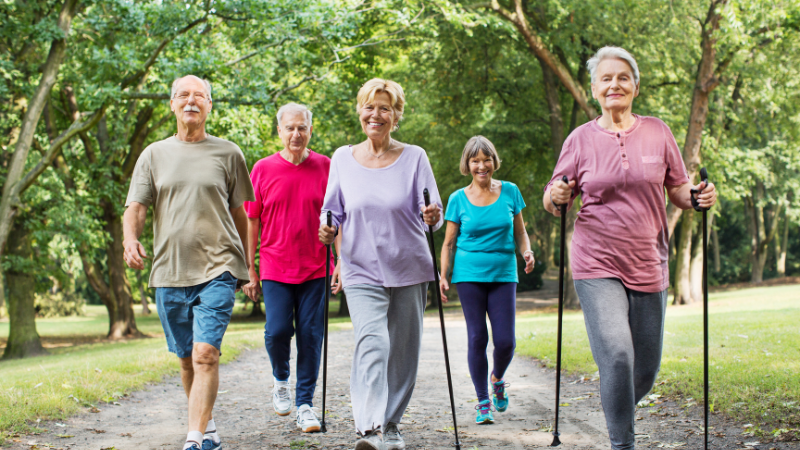
As a senior managing incontinence, you may worry that your favorite recreational activities are no longer possible. However, with some simple adjustments, you can continue to participate in hobbies and social events comfortably.
- Adjusting Activities: One way to accommodate your needs is by making slight adjustments to your favorite recreational activities. For example, planning frequent bathroom breaks during outings or choosing activities with easy access to restroom facilities can provide peace of mind.
- Choosing Appropriate Attire: Opting for comfortable and easy-to-manage clothing can also help. Wearing incontinence products discreetly under your clothing can offer reassurance while engaging in recreational activities.
- Water-Based Activities: Water-based activities, such as swimming or water aerobics, can be beneficial for seniors with incontinence. The water provides a natural barrier, making leaks less noticeable.
- Engaging in Low-Impact Exercises: Low-impact exercises, like walking, yoga, or tai chi, can be gentle on the body and reduce pressure on the bladder. These activities can be suitable options for seniors managing incontinence.
- Seeking Supportive Recreational Groups: Joining recreational groups or clubs that are understanding and supportive of incontinence challenges can create a sense of camaraderie and reduce feelings of isolation.
- Bringing Extra Supplies: When participating in recreational activities away from home, bring extra incontinence products and supplies to ensure you are prepared for any unexpected leaks.
- Prioritizing Comfort and Safety: Always prioritize comfort and safety during recreational activities. Avoid activities that could increase the risk of accidents or injury, and choose options that align with your abilities and limitations.
- Using Odor-Control Products: For added confidence during social or group activities, consider using odor-control products to manage potential urine odors discreetly.
- Engaging in Indoor Activities: Indoor recreational activities, such as arts and crafts, reading, or board games, can be enjoyable options for seniors managing incontinence, especially during inclement weather or when accessibility is a concern.
- Plan Ahead and Stay Positive: Planning ahead for recreational outings can help you feel more at ease. Keep a positive attitude and remember that incontinence does not define your ability to have fun and enjoy life.
It’s essential for seniors to continue engaging in recreational activities that bring them joy and a sense of fulfillment. Incontinence should not limit one’s ability to enjoy life fully. By making small adjustments, seeking supportive environments, and staying prepared, seniors can maintain an active and vibrant lifestyle while managing incontinence with confidence.
FAQs
Age-related incontinence is a topic that raises many questions and concerns among seniors and their loved ones. As a senior enthusiast on senior living, I’m here to address some of the most frequently asked questions about this common issue. Let’s dive into these FAQs and provide you with valuable answers and insights.
How do incontinence issues in younger females compare to those in the elderly?
Incontinence issues in younger females are generally less prevalent, often associated with specific medical conditions or factors. In contrast, the elderly experience a higher prevalence of incontinence due to age-related changes, such as weakened pelvic muscles and neurological issues.
For further information, you can refer to the National Association For Continence and the National Institute on Aging.
Can age-related incontinence be prevented?
While incontinence is more common as we age, it may not be inevitable. Here are some steps you can take to help reduce your risk of incontinence and potentially delay its onset:
Lifestyle Modifications: Embracing a balanced diet, regular exercise, and weight management can reduce certain risk factors associated with incontinence.
Pelvic Floor Exercises: Commencing pelvic floor exercises early in life can maintain strong pelvic muscles, potentially preventing incontinence or reducing its impact.
Hydration: Consuming an adequate amount of water daily is crucial for maintaining proper bladder function. Limiting diuretic intake, such as caffeine and alcohol, can help prevent bladder irritation.
Smoking Cessation: Quitting smoking is advisable, as it can harm the bladder and elevate the risk of incontinence.
Regular Checkups: Attending routine medical checkups can address health conditions that might contribute to incontinence, enabling early detection and management.
What percentage of people are incontinent?
In general, the percentage of people who experience incontinence increases with age. Here are some approximate percentages of people affected by incontinence based on age groups:
Young Adults (Under 30): Around 1-2% of young adults experience incontinence. In this age group, incontinence is less common and is often associated with specific medical conditions or factors.
Middle-Aged Adults (30-60): The prevalence of incontinence increases with age, and in this age group, approximately 10-20% of individuals may experience some form of incontinence.
Seniors (Over 60): Incontinence becomes more prevalent among seniors, with estimates ranging from 25-45% of individuals experiencing some level of incontinence. The risk of incontinence increases with age-related changes, such as weakened pelvic muscles and neurological issues.
It’s important to acknowledge that these percentages are approximate and can vary based on data sources and criteria used to define incontinence. Additionally, the actual percentage of affected individuals might be underreported due to reluctance in discussing the issue with healthcare providers.
Can pelvic floor exercises alleviate incontinence symptoms in the elderly?
Pelvic floor exercises can potentially improve incontinence symptoms in the elderly by strengthening pelvic muscles, which play a crucial role in bladder control. Consistent practice of these exercises may lead to enhanced bladder function and reduced instances of incontinence.
Additional Reading
Conclusion
Incontinence is a common issue among seniors, but it doesn’t have to define your senior life. Seek help from medical professionals and make lifestyle changes to manage incontinence effectively. Using the right products can also help. Remember, you are not alone, and there’s support available to help you live a confident and fulfilling senior life. Embrace the journey and continue to thrive despite any challenges you may face.
Share your tips or comments about incontinence in the comments below.
